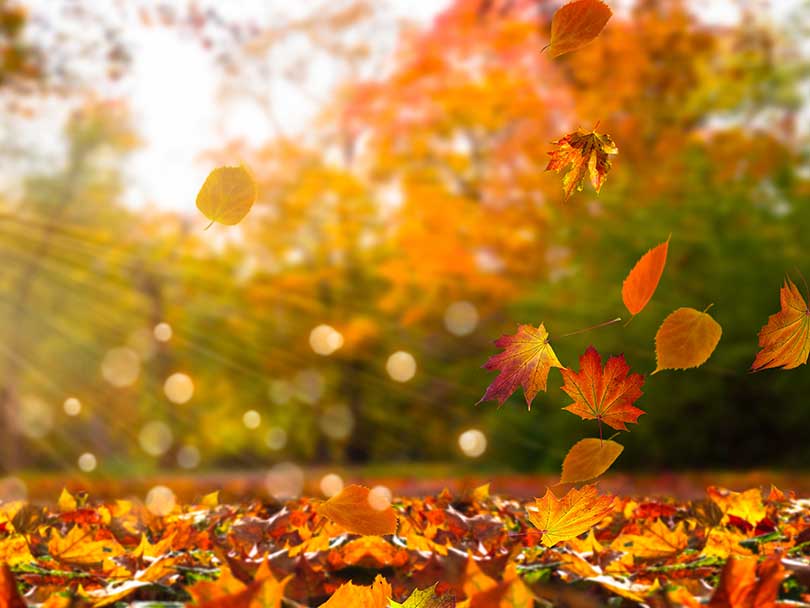By Vicki Spencer, Master Gardener
When my daughter wanted me to buy a house near her in Arkansas, she found a cute, little bungalow on a mountainside with a miniature hardwood forest in the backyard. Since I live in Denver, I suggested she hire someone to mow the lawn. At the time, she didn’t think it would be necessary. The lawn area appeared to be so small, she suggested her husband could do it.
That was what she thought in January when the yard was covered with a thick layer of leaves. Fast forward to spring when my son-in-law and grandsons relentlessly raked for days. Little did my daughter know, the lawn was so large it took an entire day to mow after removing the leaves.
Most Coloradans don’t have forests in their yards, but it is important to know what to do with autumn leaves when they begin to fall — allowing them to pile up can damage your lawn. Dense layers of leaves can invite pests and diseases and cause serious problems like snow mold and brown patch, so they should be removed. At the same time, leaving some leaves on the grass can be beneficial since they add nutrients to the soil and feed a number of microbes during decomposition.
Growing up along the Front Range, I remember many people raking leaves into piles and letting all the neighborhood kids jump into them for fun, and then they would rake leaves into piles again for bagging. Today, people don’t seem to have time, so they hire lawn-care workers or use blowers. I prefer raking myself because it’s good exercise, strangely relaxing and quiet, unlike blowers. Either way, leaves still need to be bagged and hauled away, unless you use them for mulch.
It’s easy to mulch leaves with a mulching mower. If you wait until the leaves dry out — but before they become too dense — you can walk slowly while mowing and let the mulched leaves add to the organic matter in your grass. In the fall, I typically mow every couple weeks even though the grass is no longer growing, just to mulch the leaves.
If the leaves are too thick, I still use my mulching mower, but attach the bag to collect the leaves and then spread the bagged mulch in my garden. I found that about 4 to 6 inches of mulch to be sufficient for perennials. I also spread mulch around the base of shrubs. This protects them from the cold, adds nutrients as the leaves break down over the winter and provides nesting hideaways for bees and butterflies. (Leaves that don’t break down should be removed in the spring or worked into the soil.)
I also add mulch to my vegetable garden and work it into the soil after the last harvest. Finally, I use leftovers to start my winter compost pile.
I know my garden appreciates the added organic matter from leaves because I always have beautiful flowers and a bountiful vegetable harvest without adding fertilizer.
Gardener Vicki Spencer has an eclectic background in conservation, water, natural resources and more.

